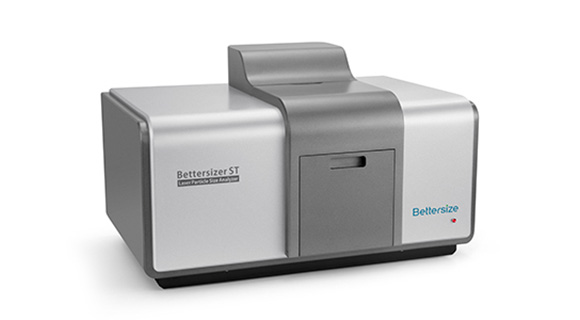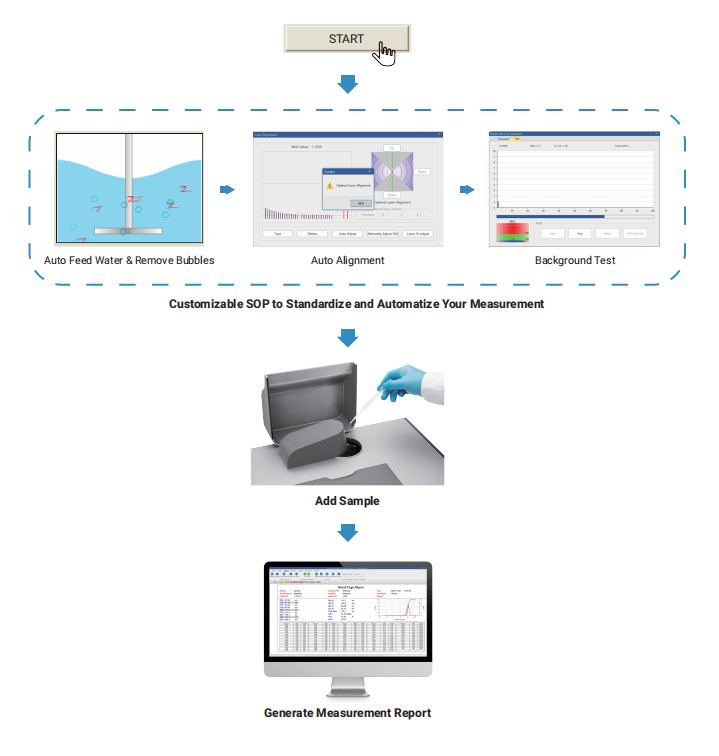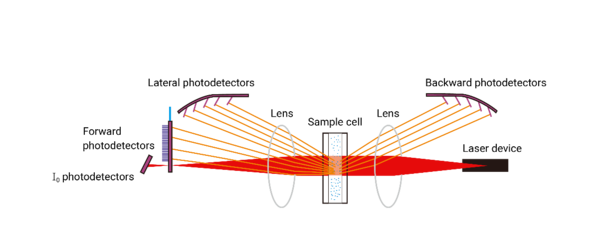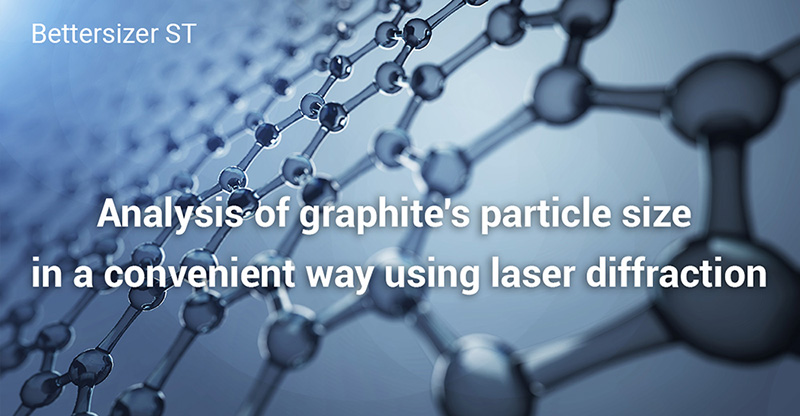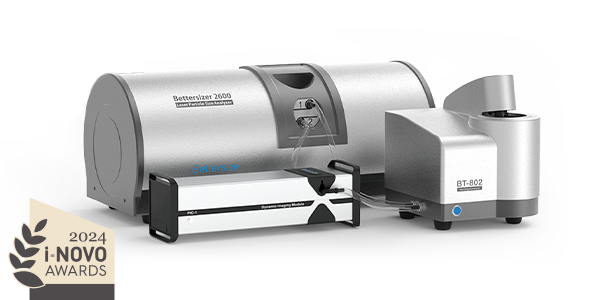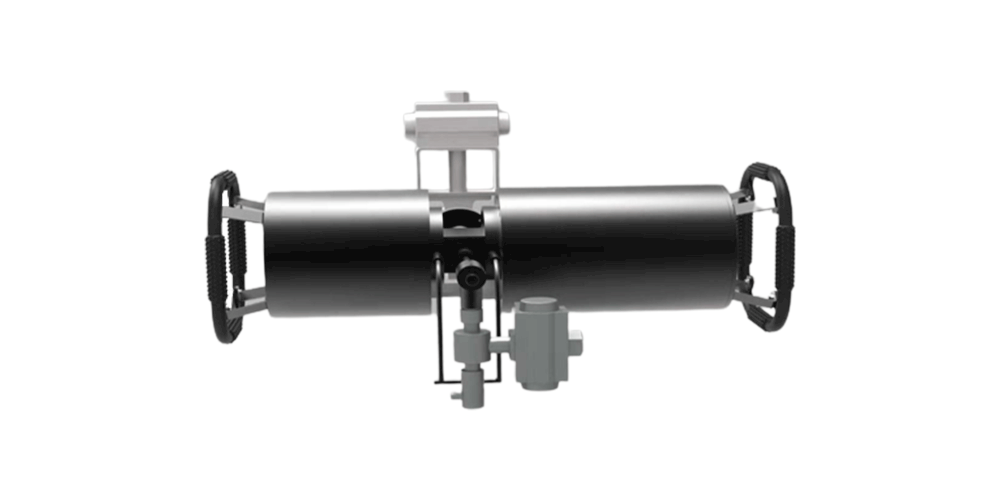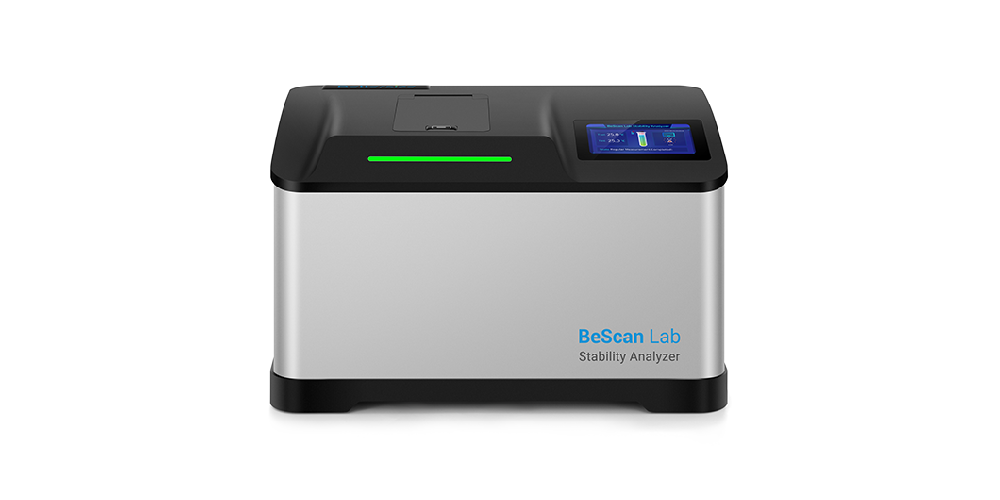Bettersizer ST
Le Bettersizer ST est un analyseur de taille de particules entièrement automatisé et intégré, doté d'un système de fonctionnement intelligent par dispersion humide. Optimisé pour le processus de contrôle de qualité industriel, le Bettersizer ST fournit des résultats de test stables et fiables avec une intervention minimale de l'utilisateur. Son faible encombrement permet d'économiser un espace de travail précieux pour les usines et les laboratoires.
Caractéristiques et avantages
- ● Type de dispersion : humide
- ● Gamme de tailles : 0,1 - 1 000 µm
- ● Robustesse
- ● Facilité d'utilisation
- ● Cost-Efficiency
- ● Conception compacte
- ● Peu d'entretien
- ● Système à double objectif
- ● Fonctionnalité d'alignement automatique
- ● Mesure automatique avec SOP
Vidéo
How to Install and Operate Bettersizer ST 
Bettersizer ST Self-Installation is Quick and Easy 
Learn How Bettersizer ST can Help with Your Quality Control in 2 Minutes 
Bettersizer ST | Demo (CaCO3 Sample) 
Bettersizer ST Overview | Laser Diffraction Particle Size Analyzer for QC 
Vue d'ensemble
Caractéristiques
SOP
DLOS
Technologie
Spécifications
Votre outil unique de contrôle de la qualité
Le Bettersizer ST est un analyseur granulométrique automatisé par diffraction laser conçu pour le contrôle qualité industriel. Son système optique breveté DLOS (Dual Lens Optical System) garantit que l'instrument fournit des résultats cohérents et fiables sur la distribution de la taille des particules. Le SOP (Standard Operating Procedure) et les procédures d'analyse automatisées sont conçus pour vous aider à gagner un temps précieux pour l'inspection de la qualité.
1. Excellente précision
Vérification de la précision des étalons
- Les échantillons standards Duke ont été mesurés séparément par le granulomètre laser Bettersizer ST, montrant le pic de distribution dans la bonne position et une distribution étroite avec une grande précision.
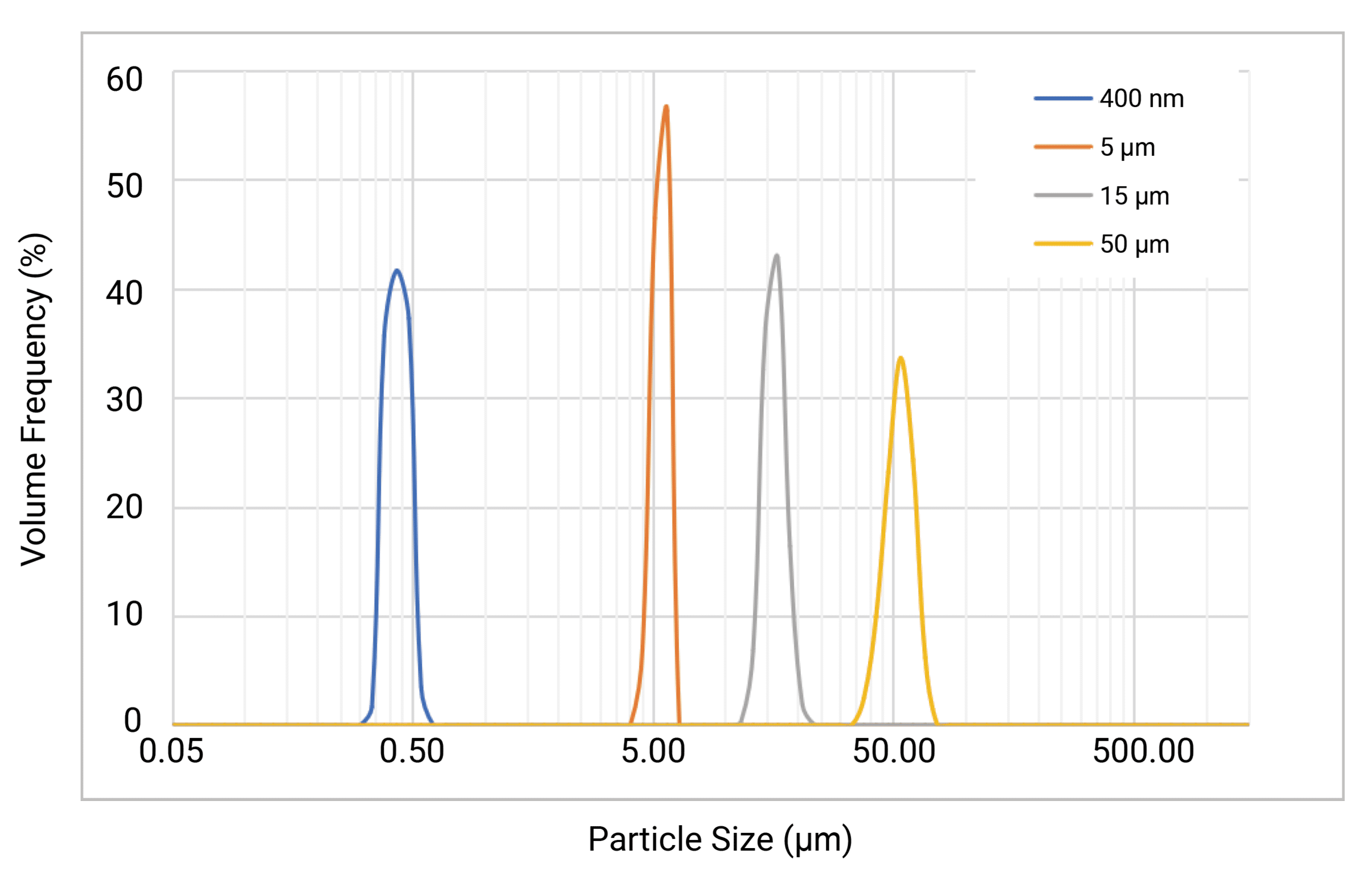
- La ligne rouge représente la plage de taille nominale des étalons ± 1,0 %, et les points noirs sont les tailles mesurées. Comme le montre la figure, la précision de mesure du granulomètre laser Bettersizer ST pour les étalons est de l'ordre de 1 %.
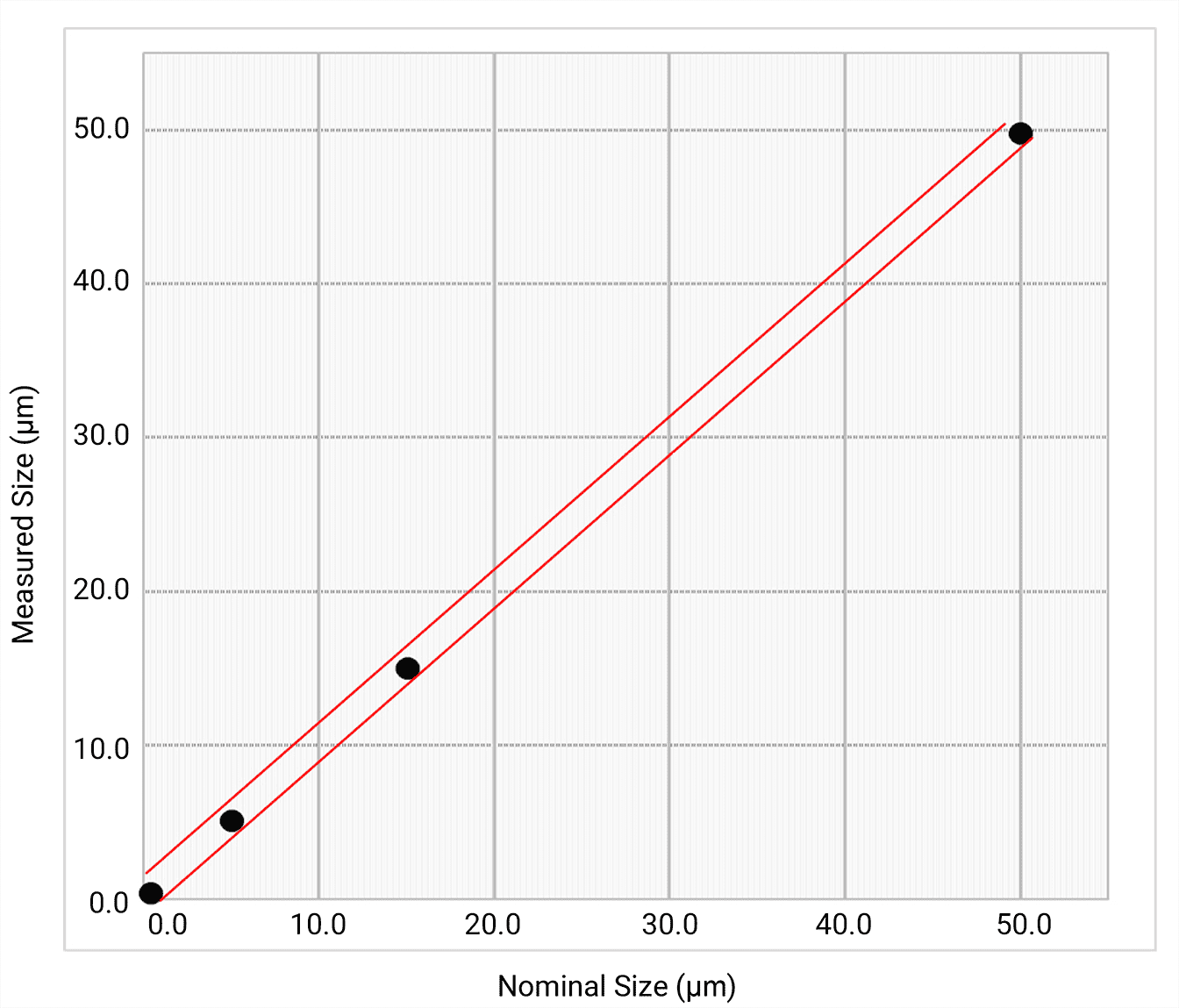
2. Répétabilité exceptionnelle
La répétabilité exceptionnelle offerte par le granulomètre laser Bettersizer ST garantit la fiabilité des résultats. Des mesures rapides avec des résultats cohérents et fiables peuvent alléger votre charge de travail en matière de contrôle de la qualité.
♦ Excellente répétabilité grâce à
Stabilité des systèmes de transmission des signaux - Système de dispersion efficace - L'alignement automatique maintient toujours l'instrument dans des conditions optimales - Taux d'acquisition des signaux jusqu'à 3500 fois/seconde.
Tests de répétabilité
L'exceptionnelle répétabilité du Bettersizer ST, démontrée par les deux tests consécutifs suivants .
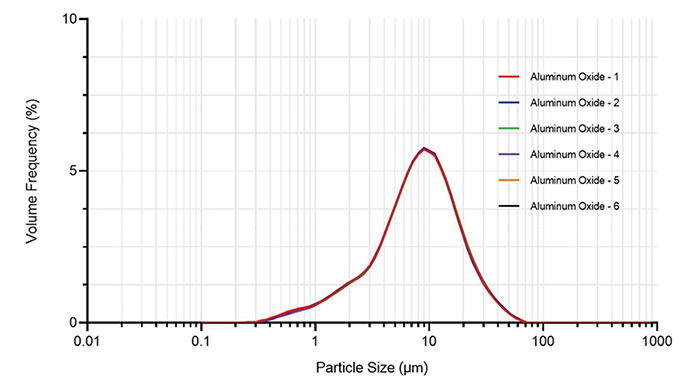 | 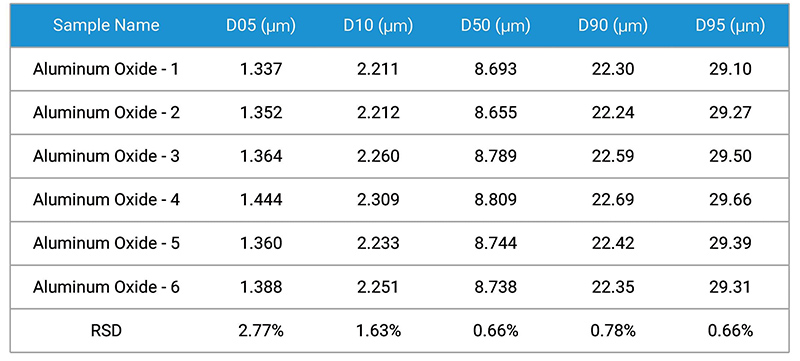 |
 | 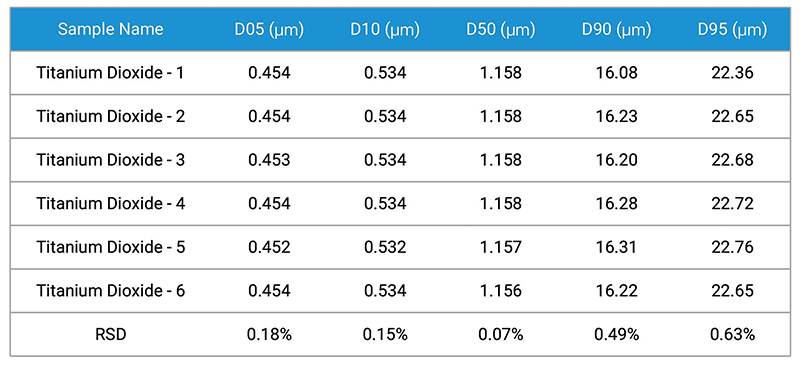 |
3. Allégez votre charge de travail à tous les niveaux
Le logiciel Bettersize offre diverses fonctions qui réduisent considérablement votre charge de travail.
1) Logiciel intuitif
2) Évaluation intelligente des données pour le contrôle de la qualité

3) Validation des performances
Grâce à la fonction indépendante de validation des performances, le logiciel peut générer automatiquement des rapports conformes à la norme ISO 13320 et aux pharmacopées.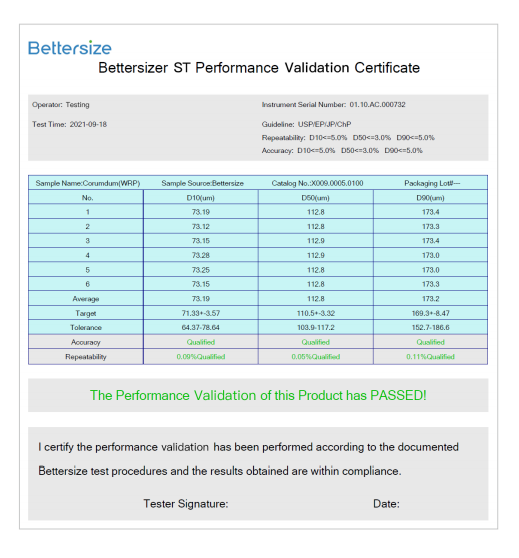
4) Inspection du système
Analyse diagnostique : Liste de contrôle pour l'inspection du système.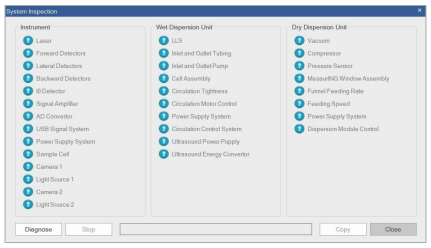
4. Rentabilité et robustesse
1) Robustesse exceptionnelle
- Moulage intégré de la plaque inférieure pour protéger l'instrument
- Des mesures précises peuvent être obtenues même après un test de robustesse.
- Source laser à fibre semi-conductrice à longue durée de vie
- Réservoir de circulation durable en acier inoxydable moulé
- Disperseur ultrasonique à puissance réglable avec protection contre la marche à sec
2) Conception compacte
- Gagnez un espace de travail précieux pour les usines et les laboratoires grâce à un système de dispersion humide interne.
- Le DLOS garantit la précision et la fiabilité des résultats, tout en évitant les optiques pliantes susceptibles de se désaligner.
3) Maintenance simple
- Le démontage simple des cellules d'échantillonnage permet un nettoyage rapide, accessible sans outils professionnels et sans formulations excessivement propres.
- La fonction d'auto-nettoyage du réservoir de circulation facilite grandement le travail d'entretien.
- Le processus d'auto-nettoyage peut être facilement personnalisé dans le logiciel.
4) Faible coût de possession
- Prix d'entrée de gamme pour un granulomètre laser
- Une gamme de mesures couvrant la plupart des applications peut être obtenue avec le DLOS sans coût supplémentaire pour une seconde source laser.
Citations
- Bettersizer 2600
Functional redundancy as an indicator for evaluating functional diversity of macrobenthos under the mussel raft farm near Gouqi Island
DOI: 10.1016/j.aquaculture.2023.740024 Read ArticleZhejiang Ocean University | 2024Biological traits analysis (BTA) helps to evaluate the effects of different environmental variables on the traits-based functional composition of macrobenthos. However, research on functional traits of macrobenthos under mussel farming is limited. We investigated the spatial and temporal response of the benthic system in terms of taxonomic and functional diversity to environmental variables of farming and natural stressors resulting from suspended mussel farming near Gouqi Island of eastern China Sea. The functional traits of macrobenthic assemblages under mussel farming were characterized by “medium adult body size”, “vermiform body form”, “high flexibility”, “infauna”, “semi-motile”, “gonochoristic”, “surface deposit-feeders”, “carnivores”, “semi-motile burrowers”, and “tube-dwellers”. Functional redundancy was stable in response to mussel farming stresses among seasons, whereas species diversity showed efficient to evaluate natural variables. Functional diversity was significantly affected by farming stressors rather than natural variables, Further analysis using multivariate methods together with continuous monitoring were highlighted to evaluate the impacts of mussel farming. Our results reinforce the importance of macrobenthic species and functional traits analysis to evaluate human stresses driven impacts in offshore ecosystems. By analysing the environmental variables with different sources, independently, we concluded the main effects of human pressures on macrobenthic community. Such distinction could be particularly effective to isolate variable environmental descriptors and evaluate their effects on functional diversity, making the current approach promising for the evaluation of ecological effects of anthropogenic stressors in aquaculture areas. - Bettersizer 2600
Degradation characteristics and utilization strategies of a covalent bonded resin-based solid amine during capturing CO2 from flue gas
DOI: 10.1016/j.seppur.2023.125621 Read ArticleChina University of Petroleum | 2024In this study, various types of degradation as well as attrition which are possibly encountered in a circulating fluidized bed temperature swing adsorption (CFB-TSA) process, were conducted experimentally to evaluate the stability of a resin-based solid amine sorbent. Other characterizations methods, such as elemental analysis (EA), Fourier transform infrared spectroscopy (FTIR) etc. were applied to further reveal the degradation mechanisms. The results showed that thermal degradation occurs from 140–160 °C due to the decomposition of amine group. The CO2-induced degradation occurs from a higher temperature of 160–180 °C accompanied by the production of urea. Hydrothermal stability is good below 130 °C, but the ionic impurities in steam crystalized on particle surface can accelerate the degradation. Oxidative degradation is the most harmful, which starts at a lower temperature of 70–80 °C with the formation of aldehyde. The existence of H2O in atmosphere can alleviate the oxidative and CO2-induced degradations. The employed sorbent has a very low attrition index of 0.05, which is 1–2 orders lower than typical commercial fluidized bed catalysts. Based on the results of stability evaluation, some design suggestions for proper utilization of this sorbent or other similar resin-based sorbents have been provided in an industrial CFB-TSA process.
- Bettersizer 2600
De-branching of starch molecules enhanced the complexation with chitosan and its potential utilization for delivering hydrophobic compounds
DOI: 10.1016/j.foodhyd.2023.109498 Read ArticleShihezi University | 2024The current study aimed to prepare the complexes between debranched-waxy corn starch and chitosan polymers (DBS-CS), and then investigated their corresponding structural characteristics, rheological property and potent application in Pickering emulsion. The results indicated that the existence of chitosan significantly inhibited starch short-range molecular rearrangement for all DBS-CS samples, which was manipulated by both debranching treatment and chitosan content. Interestingly, this is the first study to reveal that the outstanding peak at 1.8 ppm in 1H NMR spectrum for sample DBS-CS was gradually shifted towards a lower-field region following an increased chitosan content. Moreover, the debranching treatment shifted the crystallinity pattern from A-type to B-type and the relative crystallinity of DBS-CS decreased gradually with the increased content of CS. All samples had a pseudoplastic fluid and shear-thinning behavior with an enhanced shear resistance following the complexation. The DBS-CS was applied in a Pickering emulsion for showing a greater emulsifying stability and a lower gel strength than native NS-CS prepared emulsion. Importantly, the encapsulation ability of curcumin in the DBS-CS emulsion was significantly improved, followed by an increase of 15.45% for its corresponding bioavailability compared to the control. Therefore, this study might highlight a potential carrier for delivering the bioactive substances in a green pattern. - Bettersizer 2600
Heat-induced aggregation behavior of wheat gluten after adding citrus pectin with different esterification degree
DOI: 10.1016/j.foodhyd.2023.109420 Read ArticleGansu Agricultural University | 2024Wheat gluten aggregation during heat treatment is beneficial to the final quality of gluten-based products. Exogenous pectin can affect gluten aggregation. However, the effect of pectin with different degrees of esterification on the heat-induced aggregation behavior of gluten and its possible mechanism are still unclear. Thus, the heat-induced aggregation behavior of gluten after adding pectin with different esterification degree was studied in this study. When the temperature was raised from 25 °C to 95 °C, pectin affected gluten aggregation and was related to the degree of esterification. Specifically, the results of rheological properties and particle size indicated that low-ester pectin improved the viscoelasticity of gluten and promoted gluten aggregation. Thermal properties revealed that enthalpy of gluten added with low-ester pectin (37%) increased from 92.96 J/g to 95.40 J/g during heating process. Structurally, the fluorescence intensity and surface hydrophobicity of gluten added with low-ester pectin (37%) were lower than those added with high-ester pectin (73%). In addition, low-ester pectin (37%) significantly increased the disulfide bond content (from 15.31 μmol/g to 18.06 μmol/g) and maintained β-sheet content of gluten compared with gluten alone at 95 °C, indicating that low-ester pectin was more likely to induce gluten aggregation. However, scanning electron microscope showed that the gluten added with low-ester pectin (46%) exhibited a denser network structure at 95 °C than that added with low-ester pectin (37%). These results will provide a theoretical base for the regulation of gluten aggregation and the quality of gluten-based products by pectin with different esterification degree.
- 1
- 2
- 3
- 4
- 5
- 6
- 84
Ressources sélectionnées
Témoignages


Analyseur de taille de particules apparenté
-
Bettersizer S3 Plus
Particle Size and Shape Analyzer
Measurement range: 0.01 - 3,500μm (Laser System)
Measurement range: 2 - 3,500μm (Image System)
-
Bettersizer 2600
Laser Diffraction Particle Size Analyzer
Measurement range: 0.02 - 2,600μm (Wet dispersion)
Measurement range: 0.1 - 2,600μm (Dry dispersion)
Measurement range: 2 - 3,500μm (Dynamic imaging)
-
BT-Online1
Online Particle Size Analyzer
Dispersion type: Dry
Measurement range: 0.1 - 1,000μm
Accuracy: ≤1% (D50 of certified reference material)
-
BeScan Lab
Stability Analyzer
Particle size ranges from 10 nm to 1 mm
Volume fraction up to 95%
Compliance with ISO/TR 18811, 13097, 21357, 22107

